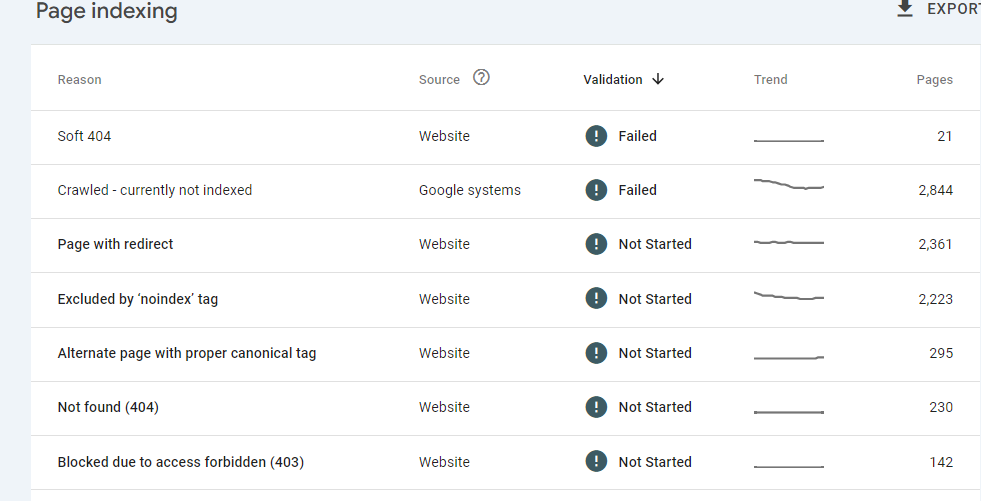In the fast-paced and ever-evolving world of digital marketing, maintaining a strong position in search engine rankings is crucial for the success of any website. However, it’s not uncommon for websites to experience fluctuations in their rankings, sometimes experiencing a sudden drop that can be concerning for site owners. Understanding the reasons behind these drops and knowing how to recover from them is essential for regaining lost visibility and traffic.
In this article, we’ll explore some common reasons for a drop in website rankings and provide actionable strategies for recovery.
Understanding the Reasons for a Drop in Website Rankings
Algorithm Updates: Search engines like Google frequently update their algorithms to improve the relevance and quality of search results. These updates can sometimes lead to fluctuations in rankings, with certain websites being affected more than others. Some of the major Google algorithm updates are Panda, Penguin, Hummingbird, Mobilegeddon, RankBrain, Fred Pigeon, BERT, and the latest core, and Helpful Content Update.
Technical Issues: Technical issues such as server errors, broken links, or slow page speed can negatively impact user experience and result in a drop in rankings. Search engines prioritize websites that offer a seamless and reliable browsing experience for users. You can view all such issues at Google Search Console and Bing webmaster tools. Other 3rd part tools like lighthouse audit, Gmatrix, Page Speed Insights, and Ubbersuggests also show you errors that you can fix with the help of a developer.
Check the below screenshot of errors shown by the Google Search Console.

Content Quality: Changes in content quality, such as a decrease in relevance, freshness, or originality, can lead to a decline in rankings. Search engines aim to provide users with high-quality, informative content, so websites with outdated or low-quality content may see a decrease in visibility due to Google’s helpful algorithm targeting such websites.
Backlink Profile: A sudden influx of low-quality or spammy backlinks, or the loss of high-quality backlinks, can signal to search engines that a website’s authority and credibility have decreased, leading to a drop in rankings. Google spam algorithm targets such websites.
Competitive Landscape: Changes in the competitive landscape, such as the emergence of new competitors or shifts in their SEO strategies, can impact a website’s rankings. Keeping an eye on competitor activity can help identify potential reasons for ranking fluctuations. You can use SEMRush or Ubbersuggest to spy on the competitors.
Changes in taste and customs: Changes in taste and customs can significantly impact rankings across various domains, from restaurants to entertainment to online content. Consumer Preferences, Cultural Shifts, Technological Advancements, Globalization, Demographic Changes,etc
How to Recover From a Drop in Website Rankings?
Identify the Cause: The first step in recovering from a drop in rankings is to identify the underlying cause. Conduct a thorough audit of your website, examining factors such as technical issues, content quality, and backlink profile to pinpoint any areas that may be contributing to the decline.
Address Technical Issues: Resolve any technical issues affecting your website, such as broken links, crawl errors, or page speed issues. Utilize tools like Google Search Console or Bing Webmaster tools to identify and fix these issues promptly. You can also check SEO Audit reports through various tools like Lighthouse, SEM Rush, Ubbersuggest, etc to know about various errors and issues.
Improve Content Quality: Assess the quality and relevance of your website’s content and make necessary improvements. Update outdated content, create fresh and engaging content, and ensure that your content aligns with the needs and interests of your target audience. The presence of a significant volume of unhelpful content could potentially hinder the performance of other pages in search results, although to different extents. Removing such content may positively impact the performance of your remaining pages. Prioritizing people-first content entails creating material primarily for users, rather than with the sole intent of influencing search engine rankings.
Audit and Disavow Backlinks: Conduct a comprehensive audit of your backlink profile to identify any spammy or low-quality backlinks. Disavow any toxic backlinks using Google’s Disavow Tool to prevent them from negatively impacting your rankings. Download the link profile from tools like Google Search Console, Bing webmaster tool, SEMRush, Ahref, Moz or Ubbersuggest. Check each link, if it is spammy, remove them or create a disavow file and upload them on Google Search Console disavow links.
Stay Informed and Adapt: Keep abreast of industry trends, algorithm updates, and changes in the competitive landscape. Continuously monitor your website’s performance and be prepared to adapt your SEO strategies accordingly to maintain and improve your rankings.
Focus on User Experience: Prioritize user experience by optimizing your website for usability, accessibility, and mobile-friendliness. A positive user experience not only enhances your website’s rankings but also encourages visitor engagement and retention.
Build High-Quality Backlinks: Focus on building high-quality backlinks from reputable and relevant sources to improve your website’s authority and credibility in the eyes of search engines. Engage in guest blogging, outreach campaigns, and networking within your industry to attract quality backlinks.
In conclusion, while experiencing a drop in website rankings can be challenging, it’s important to approach it proactively and methodically. By identifying the underlying causes, addressing technical issues, improving content quality, and staying informed about industry trends, website owners can successfully recover from ranking drops and regain lost visibility and traffic. With diligence, patience, and a strategic approach to SEO, website rankings can be restored, ensuring continued success in the competitive online landscape

[…] on quality and user experience will help you stay ahead in the competitive world of search engine rankings. VCubeWorks delivers Proven SEO Strategies for Over 1000 Websites. Elevate Your Business with Our […]